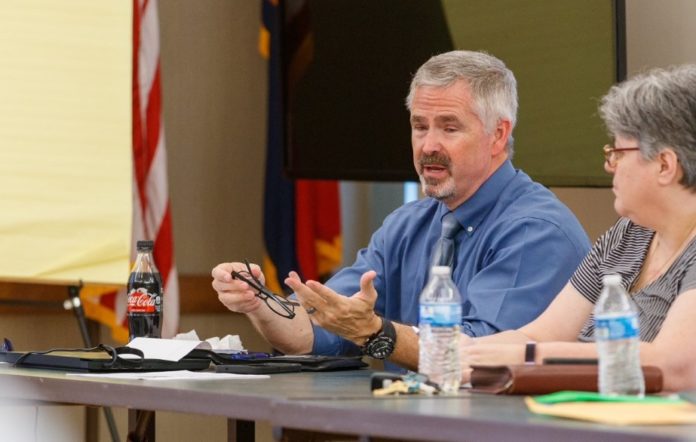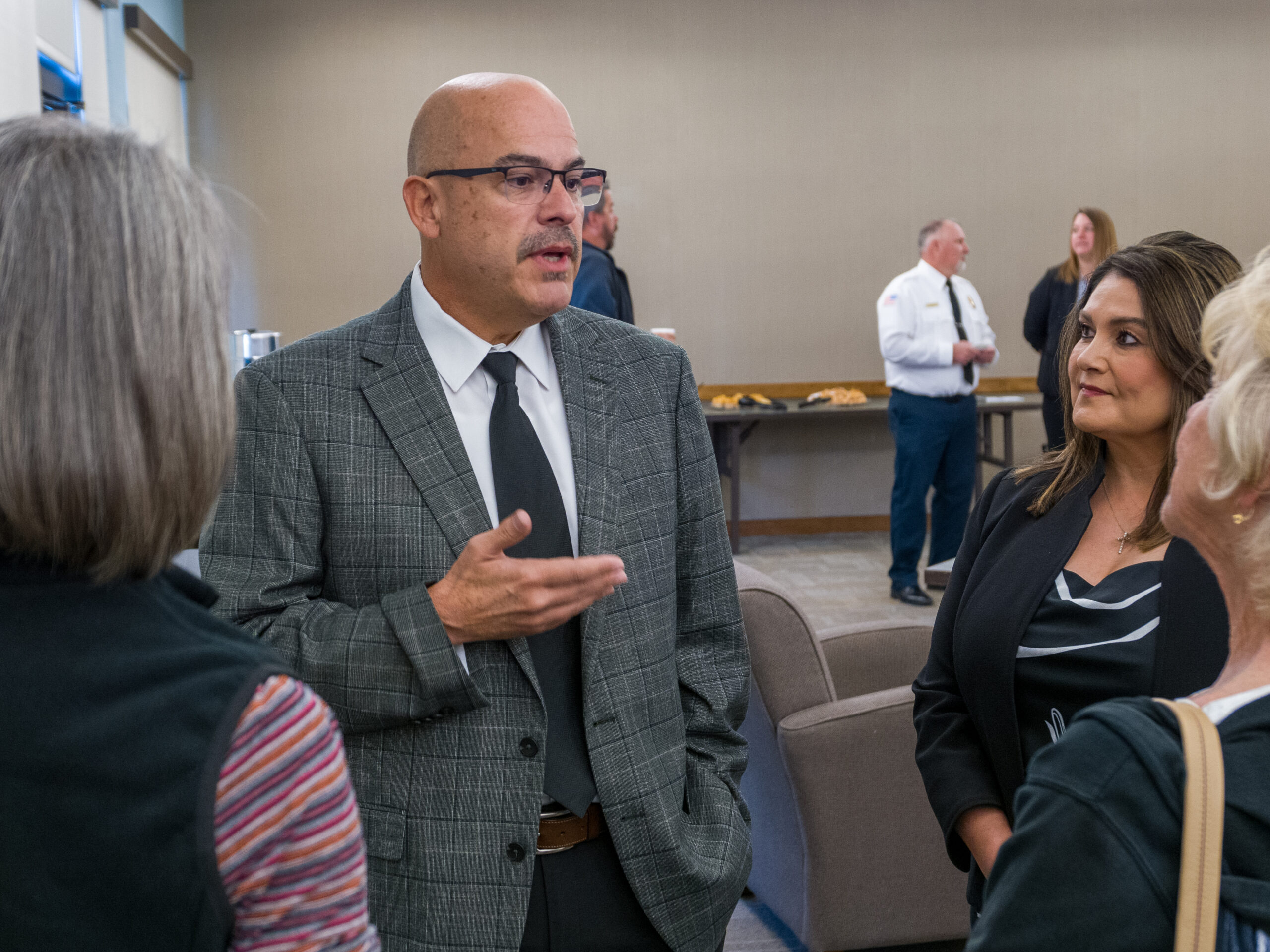Public officials from across the Verde Valley gathered Monday to hear the results of an affordable housing study and begin discussions on creating a collaborative five-year plan to address the worsening situation.
The study was presented by Rick Merritt, president and co-founder of Elliott D. Pollack & Company, an Arizona-based real estate and economic consulting firm that was brought on to create an analysis of the local housing market and conduct a survey to determine the community’s concerns.
The survey, which was conducted with the help of Yavapai College, found that lack of affordable housing, low wages, the number of vacation rentals and a lack of housing in general were at the top of the concerns.
While the majority of those surveyed said they have worked in the area for more than five years, many of those who move away reportedly do so because of a lack of affordable housing, the quality of medical resources and low wages.
“People like living and working here. They like the environment they live in,” Merritt said. “There’s a lot of reasons why people want to be here once they get here. They like what they see, they like how they live. Their problem is trying to find affordable housing.”
Cost-Burdened
To be considered affordable, housing costs should not be more than 30% of a household’s income. In the Verde Valley, approximately 36% of all households put more than 30% of their income toward housing and were considered “cost-burdened” in 2018, and over16% of households paid more than 50%, Merritt said. This is above the U.S.average of just over 30%, and the Arizona average of 29% cost-burdened households.
In 2018, around 37% of the local population lived in a low- to moderate-income household with a median income of around $47,500, according to the U.S. Census Bureau. Cottonwood had the lowest median household income at just over $34,000. Residents of Camp Verde, Clarkdale and Jerome have a median household income between $40,000 and $48,000, respectively, while Sedona sat at the top with a median income of about $60,000.
This can be problematic for many when the median cost of a single-family home is currently nearly $339,000 in Cottonwood, $320,000 in camp Verde and a whopping $690,000 in Sedona, up 16%, 15% and 21% respectively from the year before, according to Arizona Prime Real Estate’s Randy Crewse’s analysis of the current real estate market.
In Merritt’s study, it was estimated that in Cottonwood, for the approximately 1,700 households with an annual income of less than $25,000, only about 1,400 homes that are considered affordable, either to rent or own, exist.
Part of the reason for this affordability gap simply has to do with the kind of homes available in the Verde Valley, Merritt said. Single-family homes and mobile homes account for 83% of all housing units in the area. Only about 6% of all housing units are considered traditional apartments, below the statewide percentage of around 16%.
“You’re really lacking in apartments, which really is a large part of the way that you provide affordable housing,” Merritt said.
Approximately 18% of housing units in the VerdeValley are mobile homes, which while more affordable, aren’t necessarily the best option for providing affordable housing, Merritt said.
“Mobile homes” are manufactured homes that were built before the U.S.Department of Housing and Urban Development passed the Manufactured Home Construction and Safety Standards in 1976, which established new construction standards for building what are now referred to as “manufactured homes,” according to the Manufactured Housing Institute.
“They are affordable units, but they’re getting old and there are risks associated with that,” Merritt said.
It’s not just affordable homes that are lacking in the Verde Valley. There is a lack of available housing in general, due, in part, to the large volume of people moving to the area from around the country in the wake of the COVID-19 pandemic, Merritt said.
“There’s a shortage of housing. You can’t build a house fast enough. If you try to sell your house today, you’ll get a big number for it, but where are you going to go? There’s no inventory around, and it’s a really difficult market. It’s something we have never seen; it’s not the same as in the great recession,” he said.
In addition, the population of the VerdeValley is expected to grow by another 13,000 people over the next 30 years, and the forecasted increase in jobs is expected to be around 4,200 in the next 10 years, Merritt said.
Lack of Future Homes
Due to this projected increase in population, the study found that the Verde Valley will need to build 3,739 houses in the next five years to keep up with demand. Cottonwood City Councilmember Jackie Nairn said while many locals have expressed they don’t want the area’s population to keep growing, and therefore don’t want to provide affordable housing for those moving to the area, there really isn’t much of a choice.
“I hear a lot, ‘if you build it, they will come. So don’t build more.’… They’re already here, they’re already coming because they have job offers, they are coming. … We need to build something for them,” she said.
Merritt suggested a few strategies forgiving developers incentives to build affordable housing units in the area, including using a community land trust, developing city-owned land, deed restrictions, building accessory dwelling units, and offering development incentives such as waiving certain fees and reducing parking requirements.
Co-consultant on the project Sheila Harris, the founding director of the Arizona Department of Housing, also suggested tapping into state and federal resources, such as the Low-Income Housing Tax Credit program, which has been used for a number of projects in Cottonwood but is highly competitive.
For a less competitive alternative, the team suggested using private activity bonds.
Local Response
Camp Verde Mayor Dee Jenkins said that while many of these are good ideas, they may not be enough.
“Several hundred thousand dollars is just literally a drop in the bucket. We need $5 million or $10 million to get some of these projects done. We’re a very small community budget-wise. … We just don’t have the money to expand where we need to, and I don’t know how we get that,” Jenkins said.
Harris said the large amount of money coming to Arizona from the AmericanRescue Plan can and should be a resource local municipalities use to help fund their efforts.
“I have never seen this kind of money, I probably will never see this kind of money again, coming to our state. So this is a golden opportunity,” Harris said.
But, Merritt said, all of these options, particularly applying for state and federal funding, will take a lot of time and work to accomplish. He suggested hiring knowledgeable staff to help facilitate some of these projects and suggested funding this staff increase through an increase in taxes, general fund allocations, proceeds from the sale or lease of city-owned land, or bond financing.
“There’s just a lot of marketing that needs to be done to show what is needed here and how these developers can come and make things work,” Merritt said.
The next step is for local officials to determine the best way to create a Verde Valley regional, cooperative affordable housing approach to work together to determine each community’s specific needs and come up with a five-year strategy to meet them.
This is something that Sedona’s EconomicDevelopment Directory Molly Spanglersaid the cities of Cottonwood and Sedona are already in discussion about.
“I know one of our first steps is to hire a housing manager who is really dedicated to those housing issues, and we’ve also been talking about a downpayment assistance program… Currently, the city of Cottonwood and the city of Sedona are working on an IDA [individual development account] to support this position,” Spangler said.
Cottonwood’s City Manager Ron Corbin said they have also discussed the possibility of this downpayment assistance program also offering counseling services to help people in the community find and qualify for homes.He also stressed that while Sedona and Cottonwood are working together to get a program started, they want all of the towns in the Verde Valley to join in a regional effort.
“There is not a single city that will be the solution. We’ve got to work together,” Corbin said.
Not only does Corbin want to see all of the local municipalities work together on this, but, considering that the unincorporated areas nearby have the most serious housing burden in the region, he wants to see the county work with them to resolve the issue.
District 2 Yavapai County Supervisor James Gregory said the county would very much like to be involved in being a part of the solution.
“Wherever we can help, we want to help …. I think we need to be partners in that,” he said.
Officials plan to reconvene soon for a follow-up session to organize a regional cooperative and begin work on creating a five-year strategy for providing more affordable housing in each community.



